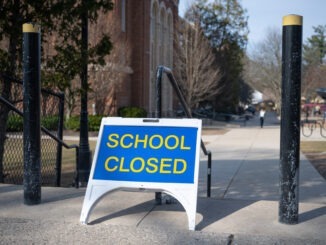As reported by The Guardian, England’s schools face a potential £1bn funding shortfall by 2030 due to declining pupil numbers, prompting concerns over closures and the future of education funding
Schools in England could lose up to £1bn in funding by 2030, researchers warn, with exceptional falls in pupil numbers prompting a wave of closures as some establishments cease to be financially viable.
Mergers and closures are already under way in parts of London, where pupil numbers have been falling for some time. According to the Education Policy Institute (EPI), a thinktank, the north-east is projected to see the greatest decline in primary pupil numbers, down 13% by 2028/9.
At secondary level, Yorkshire and the Humber, as well as the north-east and London, are projected to have the largest falls in pupil numbers, whereas in other areas, including the West Midlands, the south-east and east of England, numbers are rising.
Pupil numbers had grown because of a fertility surge in the 2000s, but that cohort has moved through primary and into secondary, leaving empty seats in their wake.
Looking ahead, even with real terms increases in per-pupil funding over the remainder of the decade, the EPI predicts that many schools will suffer funding cuts due to fewer pupils causing income to fall, though costs will remain high.
“As pupil numbers fall, many schools will see their budgets contract as a result,” the EPI report says. “However, a school’s costs do not behave the same way. Reductions in class sizes do not bring about proportional decreases in staffing costs, school supplies, energy bills, and the other day-to-day costs of running a school.”
It adds: “Faced with this challenge, some of the most severely affected schools will struggle to stay viable. As these schools feel the squeeze, they will be forced to consider alternatives: mergers with other schools, difficult cost-cutting measures, and ultimately school closures.”
The pupil population in state primary and secondary schools in England is expected to fall by about 436,000 between 2022/23 and 2028/29. The Department for Education (DfE) projects that numbers will continue to fall by an additional 382,000 between 2028/29 and 2032/33.
The decline is due mainly to falling birthrate, but migration patterns have also affected London in particular – with many young families moving out of the city because of high rents and living costs, post-Covid flight and Brexit.
Robbie Cruikshanks, EPI researcher and author of the report, said: “The scale of change projected in the pupil population presents major policy challenges to future governments.
“Policymakers must carefully consider the impacts of changes to the national funding formula on schools that are most affected by falling pupil numbers and how best to redistribute any savings created by these falls.”
The EPI calculations are based on a school funding model which replicates the DfE’s national funding formula (NFF) and allows researchers to analyse the impact of potential funding policy decisions on individual schools and areas of the country.
Using this model, the EPI calculated overall funding for primary and secondary state schools will fall to £41.6bn by 2029/30, down from a peak of £42.7bn in 2024/25 even if per-pupil funding is increased in real terms.
“As we do not know the overall schools budget for all of the projection period, we use a central estimate of a 0.5% real terms increase in pupil-led per-pupil funding, per year,” the report says.
Pepe Di’Iasio, general secretary of the Association of School and College Leaders, said schools were already under pressure thanks to 14 years of underfunding.
“Schools must not be left to manage the huge financial risk that this change in the national picture presents,” he said.
“The next government must address this grave situation by using the reduction in pupil numbers as an opportunity to improve per-pupil funding – particularly for disadvantaged pupils – rather than as a saving for the Treasury.”
A DfE spokesperson said the EPI’s figures were speculative and funding levels beyond 2024/25 are unconfirmed and are subject to future spending reviews.
“We are increasing school funding to £60.7bn next year, the highest level ever in real terms per pupil. Every school will receive a per-pupil increase in funding, and the NFF makes sure that funding is distributed fairly based on the needs of each school and their pupils.
“It is for local authorities and academy trusts to balance the supply and demand of school places, in line with changing demographics, as they have done for many years.”


Be the first to comment